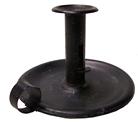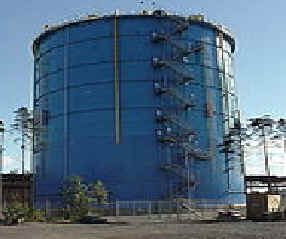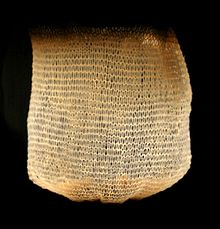In the early sixth decade of the twentieth century, I recall my Grandma, on
my mothers side, residing in a through terrace house on a cobbled street in
Rothwell. This settlement included a castle and a church that was said to have a
bullet from Oliver Cromwell in its tower. The obligatory coal mine (disused).
Rothwell was a busy town and before it became a suburb of Leeds was larger than
Leeds per se,
 The
cobbled street had no electric and the house was totally reliant on gas lighting
and gas cooking rings. The gas lighting was only for the lower floor, the
bedroom and bathroom didn't even have that. I remember my Grandma carrying a
candle holder like in the nursery rhyme "wee willy winky" in her
nightgown going to bed up the steep and narrow shadow ridden stairs. The same
utensil when going downwards into the cellar, where the coal was delivered down
a chute, to fill a coal bucket.
The
cobbled street had no electric and the house was totally reliant on gas lighting
and gas cooking rings. The gas lighting was only for the lower floor, the
bedroom and bathroom didn't even have that. I remember my Grandma carrying a
candle holder like in the nursery rhyme "wee willy winky" in her
nightgown going to bed up the steep and narrow shadow ridden stairs. The same
utensil when going downwards into the cellar, where the coal was delivered down
a chute, to fill a coal bucket.
Gas and coal really go together as gas in those days was a bi-product of coal
before the finding of natural gas under the earth in pockets ready made to use.
It was known as town gas and stored in huge tanks which expanded upward in a
structure called a gas holder.
The gas came from coal that had been gasified by heating the coal in enclosed
ovens with an oxygen-poor atmosphere. The fuel gases generated were mixtures of
many chemical substances, including hydrogen, methane, carbon monoxide and
ethylene, and could be burnt for heating and lighting purposes. Coal gas, for
example, also contains significant quantities of unwanted sulfur and ammonia
compounds, as well as heavy hydrocarbons, and so the manufactured fuel gases
needed to be purified before they could be used. Another product were the
cinders left over when cooled, they were known as coke which was also classified
as a smokeless fuel in later years as all the gasses had been removed from it.
The coke could not be set alight until the temperature had risen to an ignition
point which coincidently was often done by utilising a gas poker!
The gas was usually manufactured locally at a gas and coke works then stored
in the gas holder. The gas was pumped in and stored at atmospheric pressure. The
pressure of the collapsing container was sufficient to push it around the piped
system.
The lighting was originally just a naked flame from a tapped gas pipe, but in
the late 19th century a gentleman with 
 the
Welsbach, invented a gas mantle which was redeveloped by himself in the early
20th century to give a more whiter light. Therefore gas lighting continued being
used for both domestic and street lighting. The latter being originally lit by
an employee of the borough who went round to light the gas lamps. Later this
process was carried out by using clockwork time clocks and a small pilot light,
which, still involved an employee winding the clocks and relighting the pilot
when it went out. It kept people employed I suppose. I remember as a child,
running up to the old post and hitting them with soles of my feet to shock the
clock into the on position and make the light come on!
the
Welsbach, invented a gas mantle which was redeveloped by himself in the early
20th century to give a more whiter light. Therefore gas lighting continued being
used for both domestic and street lighting. The latter being originally lit by
an employee of the borough who went round to light the gas lamps. Later this
process was carried out by using clockwork time clocks and a small pilot light,
which, still involved an employee winding the clocks and relighting the pilot
when it went out. It kept people employed I suppose. I remember as a child,
running up to the old post and hitting them with soles of my feet to shock the
clock into the on position and make the light come on!

